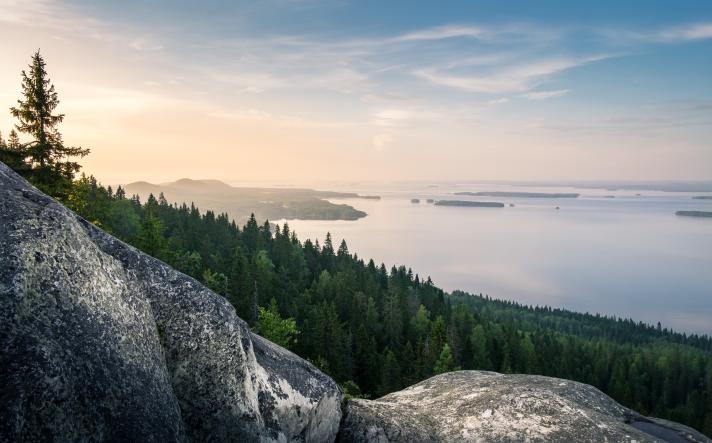In the past years, European regions have focused on developing Smart Specialisation strategies to respond to the need for transformation and modernisation of their economy. As an innovative and emerging sector, the Blue Bioeconomy offers for many regions a strong potential to tap into new resources, while reducing dependency on overexploited ones, and to halt the decline of traditional economic sectors.
As part of the preparatory work to establish the European Marine Biological Resource Centre – a research infrastructure for marine biology and ecology research which launched in mid-2018 – a mapping exercise was done of which European regions had included marine biotechnologies in their regional development strategies. Lucas Bosser, senior policy officer at the Conference of Peripheral Maritime Regions – one of the organisations that carried out the mapping exercise – highlights some of the main lessons.
What was the background to the mapping exercise?
Lucas Bosser: The idea came from a tool that the European Commission’s Joint Research Centre developed to map regional smart specialisation strategies: the Eye@RIS3. We looked at this in relation to marine bio-resources and marine biotech and also fisheries and aquaculture, and found that the tool did not identify several regions as working on marine biotech when we knew, because we have regular talks with them, that they are targeting it in their smart specialisation strategies. The JRC relies on what information regions provide to them, but we know several regions have identified marine biotech as something that could bring growth in their territories. This focus could be based on the biomass resources they have, their research communities or their networks of small and medium-sized companies (SMEs).
Are there any stand-out trends in terms of which regions are most like to focus on the blue bioeconomy?
Lucas Bosser: One trend that is quite easy to spot is that regions tend to be more advanced if there is a really strong marine research institute or centre. It’s hard for private companies, unless they are really huge and located in peripheral regions, to develop that kind of knowledge by themselves. They need to be alongside strong research communities that are exploring the biomass and its potential. Companies can then develop more concrete applications for this knowledge.
In terms of development of the research institutions, historically the first step might have been exploring fish stocks or exploring the potential of marine biomass. In Brittany for instance there is an institute in Roscoff (Station Biologique de Roscoff). They located there because of the tides and because there is a unique variety of seaweeds. They are linked to the University Pierre and Marie Curie in Paris and therefore have a really strong structure backing them up.
Is there any geographical pattern, with relevant marine institutes more likely to be present in certain countries or certain parts of Europe?
Lucas Bosser: There are hotspots depending on the marine research institutes: in Gdansk, for example, or in Kiel (Schleswig-Holstein), in Flanders, in Brittany, in Galicia, in the Algarve, on Crete, among others. But you cannot say the focus on blue biotech is rather northern or southern. It is more spread. It depends on where research is happening and whether there is a bridge between the knowledge produced by the research centre and the private sector. That’s the real challenge: to make it an economic reality. That depends on the SMEs in the relevant regions. It is easier to develop marine biotech applications when there are several aquaculture companies in an area, because they demand new products, more sustainable solutions to feed the fish for instance, and thus there is a market right there that is ready to invest.
Is there a model for developing marine biotech as part of regions’ smart specialisation strategies?
Lucas Bosser: I wouldn’t say one solution fits all in this matter. It really depends on the balance that has developed in each territory in terms of how the universities work with the private sector and the other way around, if the local authorities are involved, if they’re utilising EU or public funds to facilitate the emergence of the sector, and also on the competences of the region.
However, one thing from a European perspective that can be done is that regions should be given as much freedom as possible with the European funds they get – if a region thinks it can further develop its blue biotech sector, it should be able to use the European funds. Beyond that, it’s really about supporting research centres and facilitating the creation of links between them and the private sector. It’s really simple, but they all need to sit around a table and develop some key guidelines and a territorial strategy they can use to develop new policies and deploy the EU funds they get. This works, for example, in Vastra Gotaland in western Sweden, where they developed years ago a blue cluster to facilitate this kind of exchange. It’s working and delivering. From a practical point of view the first step seems to be sitting around the same table and developing a strategy together.
Further information
CPMR website: https://cpmr.org/.
For information about the preparatory project, see http://www.embrc.eu/pp2EMBRC.
A map from the exercise, showing a breakdown of regions according to their marine biotech research assets and policies, is available at https://www.google.com/maps/d/viewer?mid=11xB3ZOpVqywZtpE2k2S8fZMS2q8.
Spatial Foresight, SWECO, ÖIR, t33, Nordregio, Berman Group, Infyde (2017): Bioeconomy development in EU regions. Mapping of EU Member States’/regions’ Research and Innovation plans & Strategies for Smart Specialisation (RIS3) on Bioeconomy for 2014-2020. Available at https://ec.europa.eu/research/bioeconomy/pdf/publications/bioeconomy_development_in_eu_regions.pdf
De Vet J-M., Edwards J., Bocci M. (2016), Blue Growth and Smart Specialisation: How to catch maritime growth through 'Value Nets', S3 Policy Brief Series No. 17/2016. Available at http://s3platform.jrc.ec.europa.eu/documents/20182/154989/Blue+Growth+and+Smart+Specialisation/9c313981-8c97-44bc-8284-b63df078e71c

